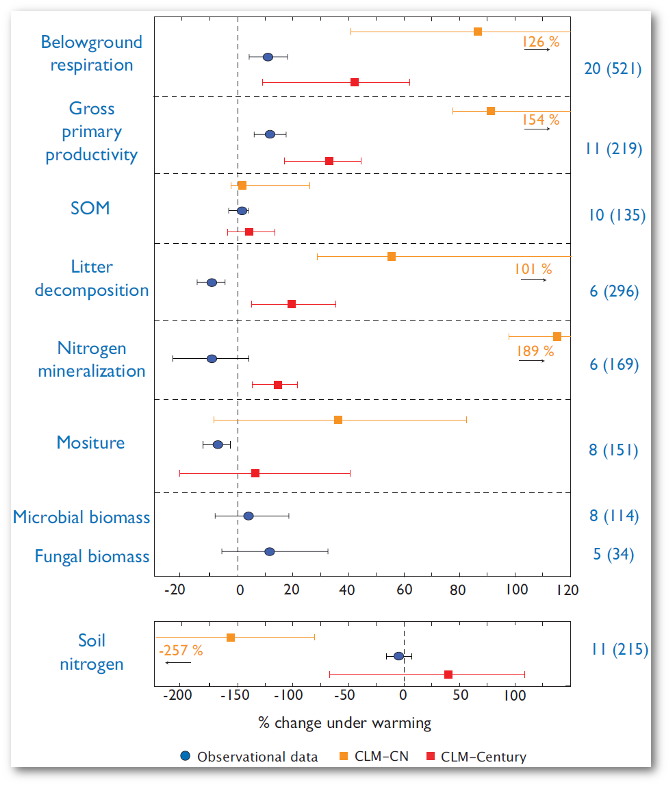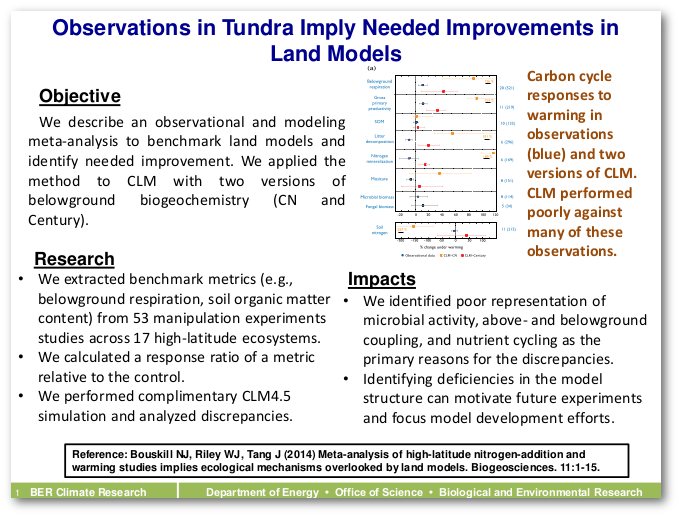Research Highlights
Observations in Tundra Imply Needed Improvements in Land Models
December 11, 2014
Objective
We describe an observational and modeling meta-analysis to benchmark land models and identify needed improvements. We applied the method to the Community Land Model (CLM) with two versions of belowground biogeochemistry (CN and Century).
Research
- We extracted benchmark metrics (e.g., belowground respiration, soil organic matter content) from 53 manipulation experiment studies across 17 high-latitude ecosystems.
- We calculated a response ratio of a metric relative to the control.
- We performed complimentary CLM4.5 simulations and analyzed discrepancies.
|
Impacts
- We identified poor representation of microbial activity, above- and belowground coupling, and nutrient cycling as the primary reasons for the discrepancies.
- Identifying deficiencies in the model structure can motivate future experiments and focus model development efforts.
Bouskill, Nicholas J., William J. Riley, and Jinyun Tang. December 11, 2014. “Meta-analysis of High-latitude Nitrogen-addition and Warming Studies Implies Ecological Mechanisms Overlooked by Land Models.” Biogeosci., 11(23):6969–6983. doi:10.5194/bg-11-6969-2014.

